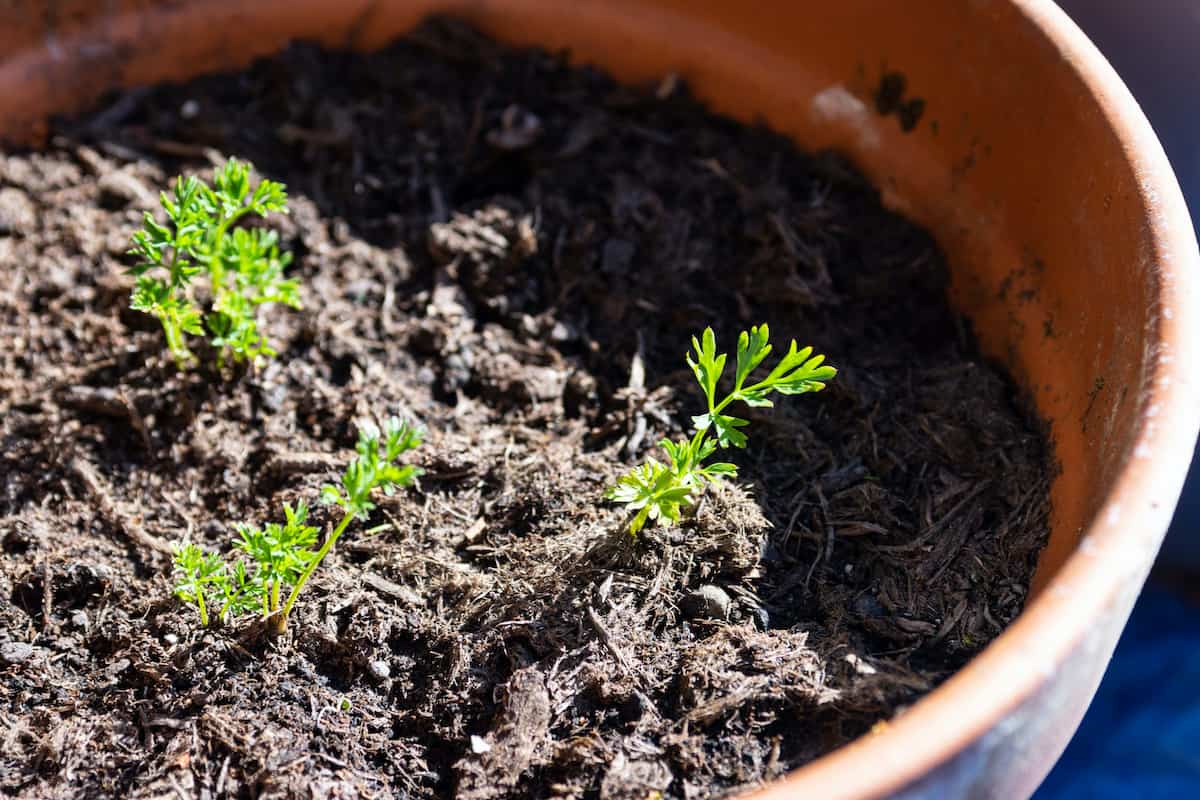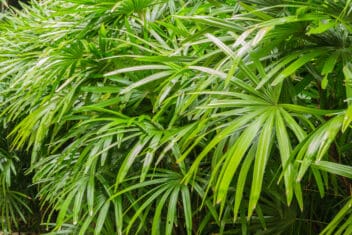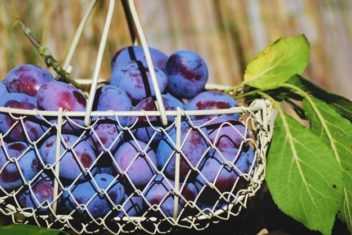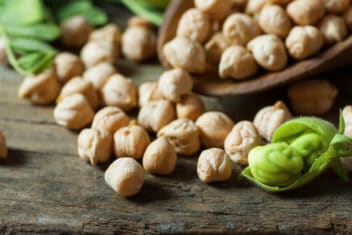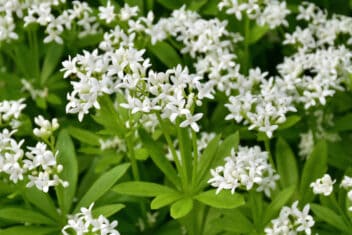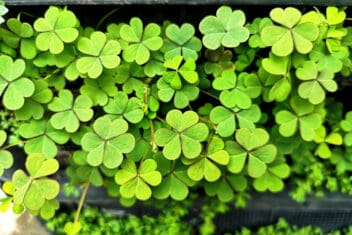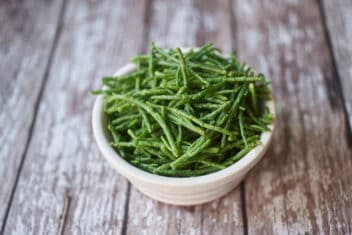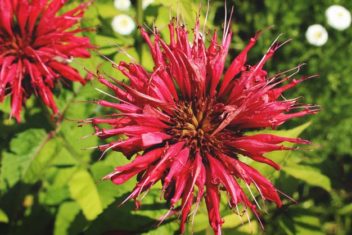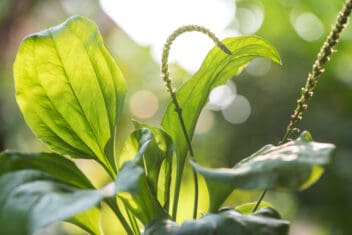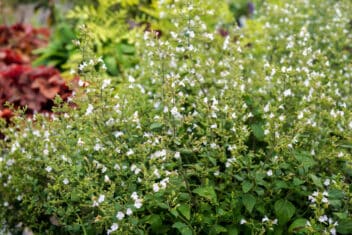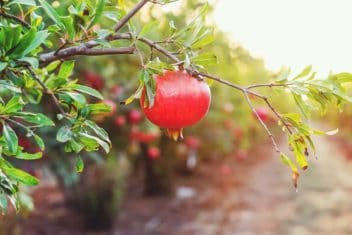Carrots have a reputation for being a little difficult to grow. If you have tried growing them in the garden and not done so well, try growing carrots in containers. Under the right circumstances, they’ll do well in pots and you’ll love the results.
If you live in an apartment or don’t have enough garden space, containers are the perfect solution!
There are varieties that prefer to grow in containers and you can even try some of the bigger types if your container is large enough. Planting smaller varieties gets you a harvest quicker, so it’s fun for the kids too.
Lets get started learning how to plant this sweet tasting, simple crop.
Why Grow Carrots in Containers?
Obviously, anyone who lacks garden space benefits from being able to grow their crops in a container.
On top of that, the loamy, loose nature of potting soil means carrots are free to stretch out and are easy to harvest. It also enables you to move the containers around to follow the sun.
Carrot Varieties for Containers
Most carrots grow happily in containers, but the best ones to try are the smaller ones or the ‘radish’ shaped types that don’t take up a lot of space.
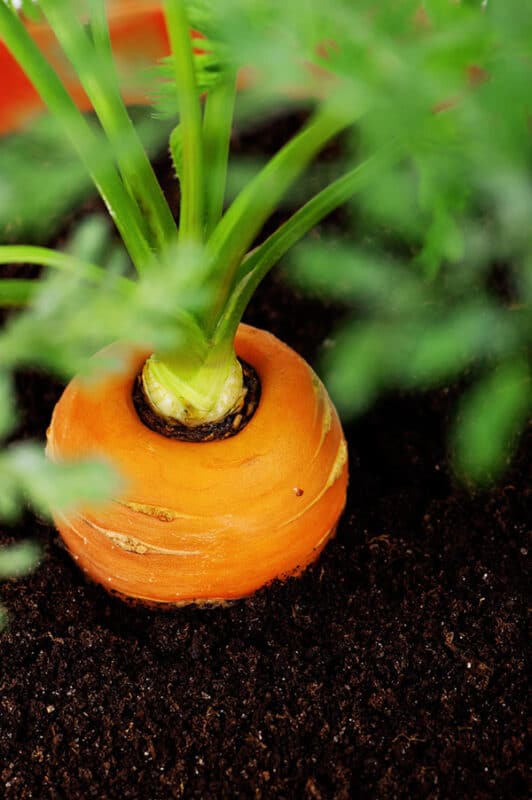
Some varieties have either been bred for containers or suit them perfectly. Have fun experimenting with different types.
Paris Market
This small, round variety is ready for harvest in 50 to 65 days. The carrots are sweetest when they are about 2 inches in diameter. This is an old French variety that thrives in containers.
Romeo
Another round variety about 2 inches in diameter. Romeo is a fast-growing variety bred to be small.
Thumbelina
About the size of a golfball, Thumbelina is a sweet-tasting carrot. This variety grows well in spring and fall.
Nantes
Nantes produces a carrot ready for harvest in about 75 days. It is a long variety and should be harvested when about 7 inches long. Nantes is a very sweet carrot. The ideal temperature is 45°F to 75°F. It’s a great type for a beginner.
Chantenay
This is a short, thick carrot that matures in around 75 days. It looks good in containers because it grows a heavy, dark green foliage. The ideal temperature for growing this type is 45°F to 75°F. Another good option for a beginner.
Imperator
Your container must be more than 12 inches deep for this long thin carrot. The ideal temperature for growing is between 60°F and 85°F.
Danvers
A great carrot for beginners growing in containers because it is not fussy and grows in most conditions.
How to Grow Carrots in Containers
When growing in the garden, carrots do well in USDA Zones 3 to 10. Carrots need to stay warm, so if you live in zone 3 or 4, make sure you are growing a type that can mature while temps are warm but not hot.
In containers, choose a site that will receive six or more hours of full sun. Even if it’s cloudy, the carrots will benefit from the light.
The soil medium can’t be hard as carrots need loose, well-draining soil. If there are obstructions in the soil, the carrot will be deformed or stunted. That makes container growing ideal, so long as you’re using a fresh, high-quality potting soil.
There are potting mixes that are specifically for vegetables and they contain everything that’s needed.
When to Plant
Start a couple of weeks before the last frost. Sow in containers and cover with plastic, an old window frame, or inside a greenhouse. Carrots are a cool-season crop, but they won’t do well in severe frost when they’re young.
Choosing a Container
Any container will do for growing carrots as long as it’s at least 12 inches deep and wide, but the deeper the better. Carrots need plenty of room to grow.
Ensure the base has a hole for drainage.
Planting the Seed
Fill your container with potting mix to about 3 inches from the top. Sprinkle the seeds liberally over the surface, then cover lightly with more soil.
Water well and don’t allow the soil to dry out. Keep it moist, but don’t let water sit in the container. Water every three days or so.
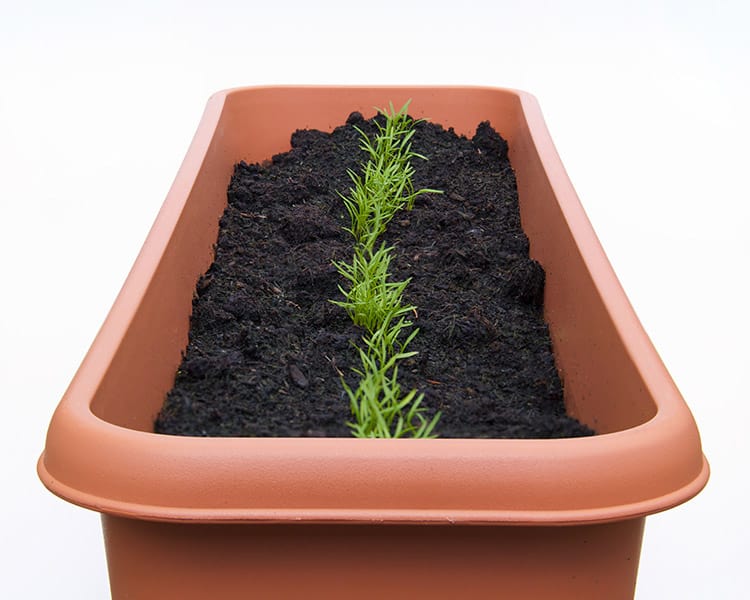
The seeds take about three weeks to germinate , so be patient.
When the seeds have germinated, it’s time to thin them out to give the carrots space. Thin out the weaker smaller ones and then those that will give space to the others. Give each remaining carrot about two inches of space around it.
Caring for Carrots in Containers
Now that you have little baby carrots growing in your container, it’s time to take care of them until they’re ready to come out of the soil. Like most plants, they need the basics: fertilizer and water.
Fertlilizer
Feed the carrots every three weeks with a foliar fertilizer, preferably a balanced organic type.
Avoid using too much nitrogen-heavy fertilizer or manure. This will cause the carrots to fork and deform.
Water
Water as and when you need to because all soils and environments are different. Don’t let the soil dry out, so keep it moist, but not soaking. You can touch the soil to see if it feels like a wrung-out sponge. If not, add some water.
It’s especially important to keep on top of the moisture in container-grown plants because containers dry out quicker than the soil. A self-watering container or drip irrigation system can be helpful if you live in a hot or dry climate.
Weeding
Weeds get everywhere and your carrots in containers are no different. Keep an eye out, and when you see weeds appear, pull them out. If you let them get too big, the carrots will be disturbed and stunted.
Companion Planting for Growing Carrots in Containers
If you have a large pot, you can plant the following with the carrots, but it’s best to keep them in separate groups so you don’t disturb the carrots.
If you have planted the carrots in smaller containers, plant the following in separate pots surrounding the carrots:
- Chives
- Radish
- Lettuce
- Sage
- Cherry Tomato
- Rosemary
Don’t plant near:
- Dill
- Potatoes
- Parsnip
Common Problems and Solutions for Growing Carrots in Containers
Carrot is susceptible to a number of diseases and pests, but prevention is better than cure. Make sure your pots are cleaned well before use. Don’t reuse old potting mix that has already been used in pots to grow carrots or anything else.
Of all the carrots I’ve grown in pots, I’ve had very few problems compared with the carrots I plant in the garden. This is probably because the potting mix is fresh and I can move the pots around to get the sun.
Aphids
Aphids are insects who like to gather on the underside of foliage. Though these sapsuckers are not generally a problem in small numbers, a big infestation can stunt growth.
Use an insecticidal soap or neem oil. I treat with neem oil as soon as I notice aphids because they increase in numbers rapidly.
Blight
There are a few types of blight that affect carrots. Spots and lesions form on the foliage and severe cases cause the green tops to wither and die. To avoid blight, practice the following:
- Source blight-resistant varieties
- Avoid watering the foliage
- Avoid overcrowding – especially important in container carrots!
- Don’t apply excessive amounts of nitrogen
Carrot Rust Fly
This pest is the bane of many gardeners, especially in temperate regions. The larvae burrow into the carrot root, causing holes and damage which leads to other diseases.
Dig in neem granules when you first fill the container with a potting mix. Do this if you are in a temperate zone or if you have trouble with carrot rust fly in your area.
Black Rot
This fungal disease is spread through infected seeds. Make sure you source seeds from a reputable seller. If a friend gifts you seeds they have collected themselves, ask if the carrots suffered from any diseases.
If you are unsure, soak the seeds in hot water for a few minutes before planting. The signs of black rot are various:
- Damping off – the stem and roots rot below the surface
- Rotting of the root and crown
- Blight on the foliage
- Lesions that appear sunken on the carrot
Downy Mildew
This fungal disease affects many plants and carrots are no exception. You will see a grey, powdery growth on the foliage, distortion of the green tops, and wilting foliage.
The best way to avoid this disease is to not overcrowd the carrots in the container and don’t water the foliage. Try an organic fungicide to control the disease at the first signs.
Wireworms
Wireworms are the larvae of click beetles. Like carrot rust fly larvae, they burrow into the carrot root. Don’t reuse old potting mix or take soil from the garden for your container.
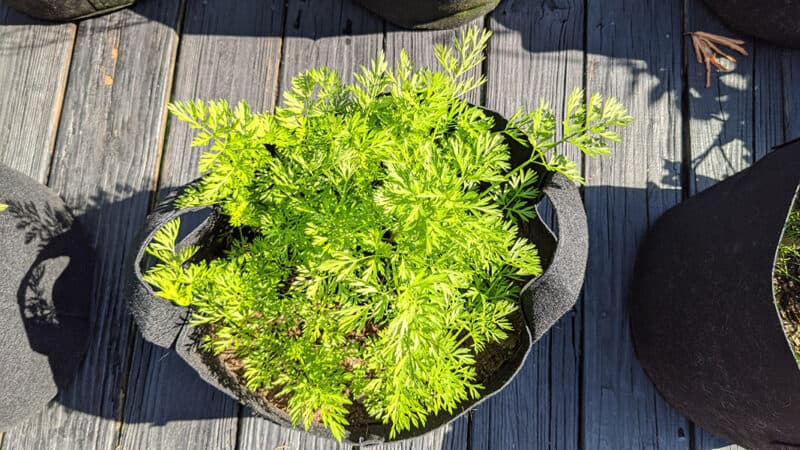
Get Ready to Expand Your Container Garden
Growing carrots in containers is a great idea when you have limited space or as a project for the kids. They are easy to plant and although they aren’t swift growers, they are fun to harvest and use.
Once you’ve pulled them, our guide will show you how to keep them fresh.
Also, if you have sowed carrot seeds in the garden and have some leftover, plant in a container an compare the germination rate, growth and pests and diseases dealt with.
